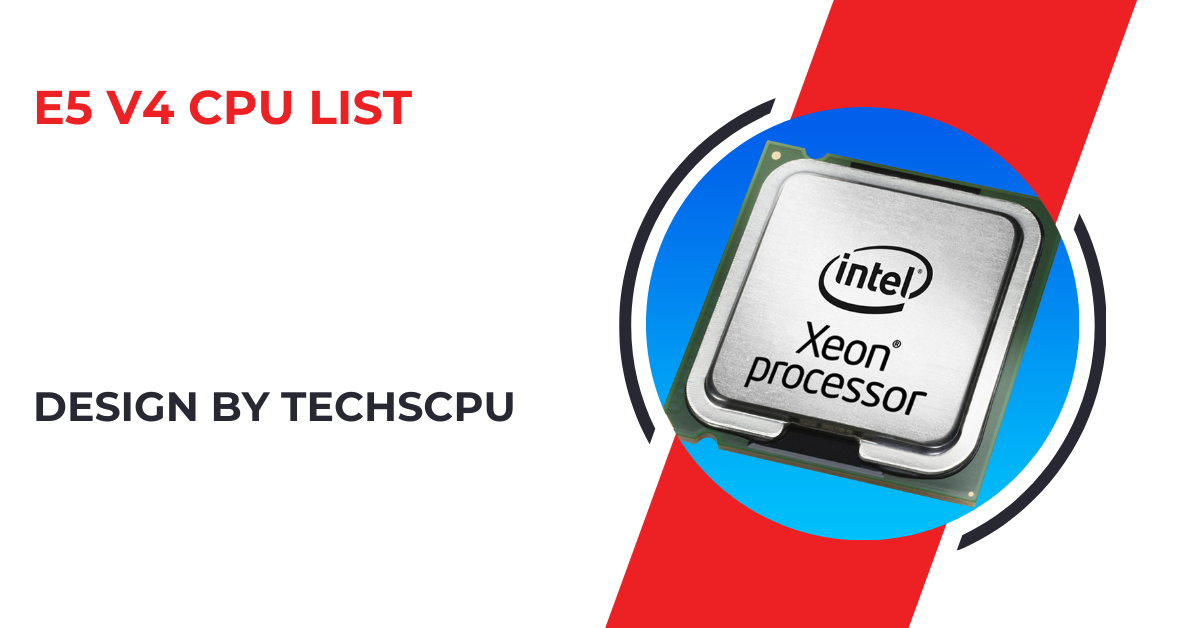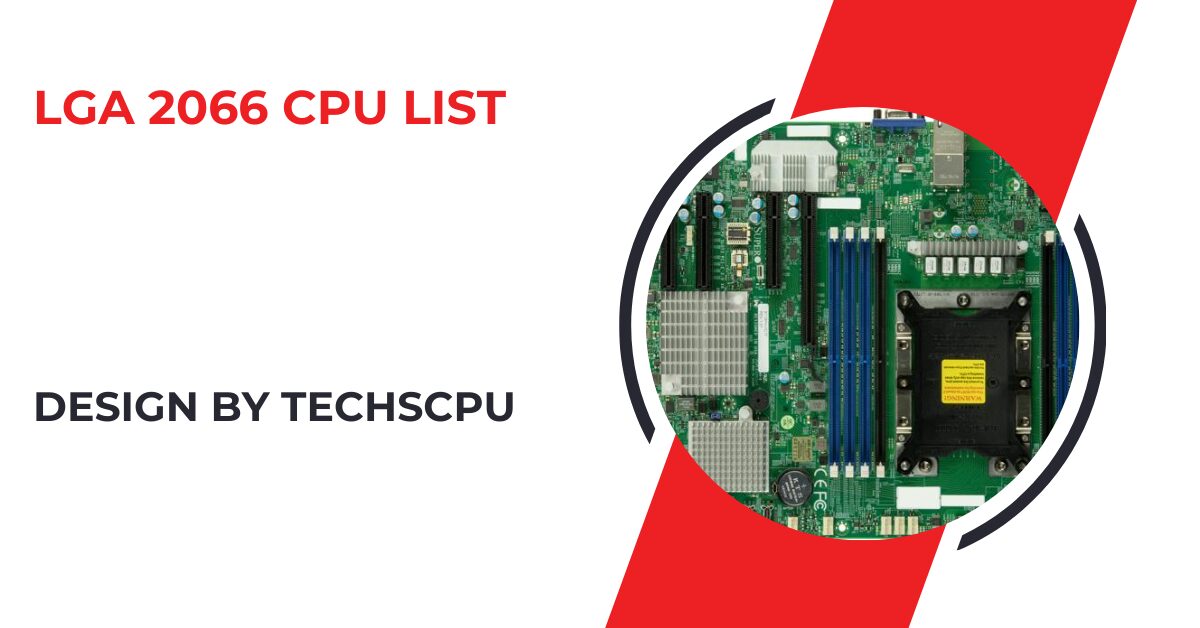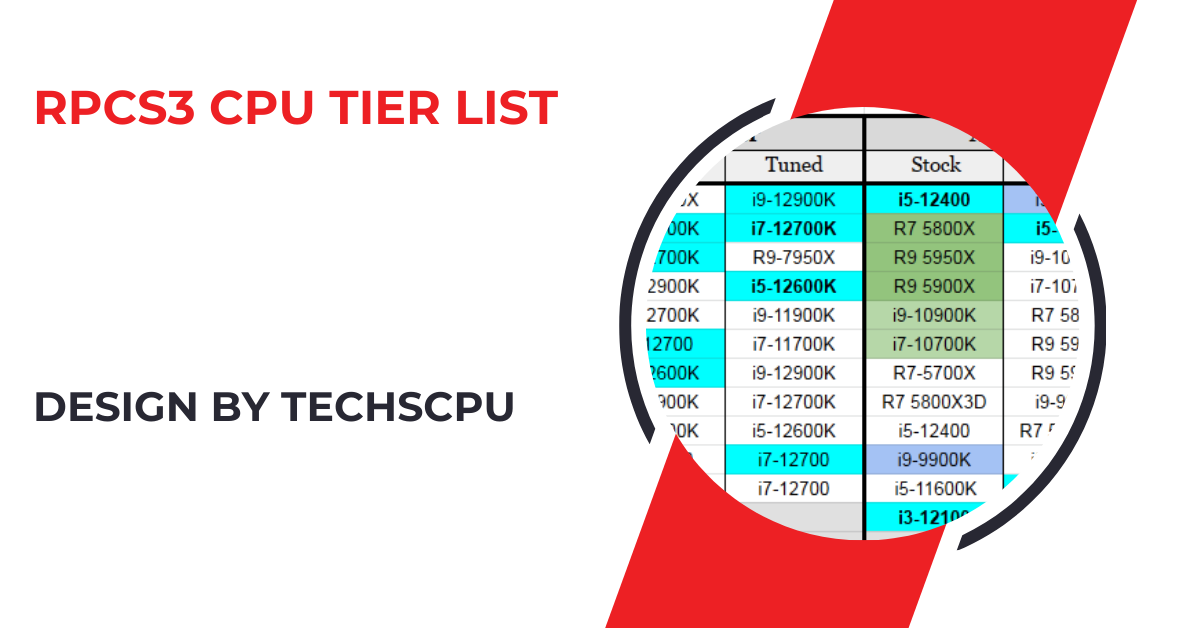The comprehensive guide explores Intel Xeon E5 v4 CPUs, highlighting their performance, features, and applications in data centers and enterprise environments.
The Intel Xeon E5 v4 series stands as a testament to Intel’s commitment to delivering powerful, scalable, and efficient processors for enterprise and data center environments. Launched in 2016, these CPUs, based on the Broadwell-EP architecture, marked a significant advancement in computing capabilities, offering enhanced performance, improved energy efficiency, and robust security features.
Introduction to Intel Xeon E5 v4 Series:
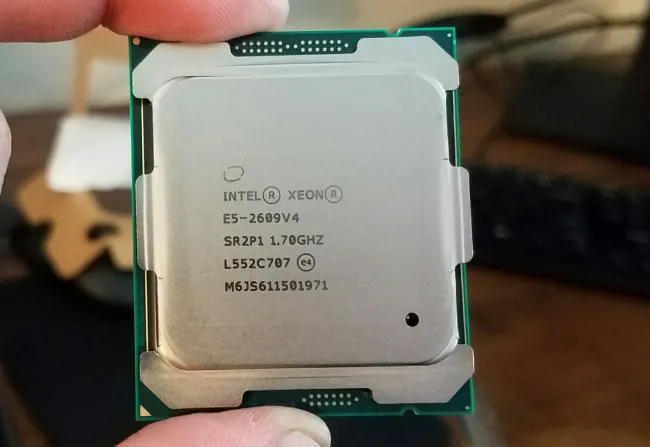
The Intel Xeon E5 v4 series represents the fourth generation of Intel’s Xeon E5 family, designed primarily for dual-socket server systems. Built on a 14nm manufacturing process, the Broadwell-EP architecture brought substantial improvements over its predecessors, including higher core counts, increased cache sizes, and better power efficiency.
Key Features of E5 v4 CPUs:
Broadwell-EP Architecture:
The Broadwell-EP architecture introduced several architectural enhancements that boosted overall performance and efficiency. These enhancements include improved instructions per clock cycle (IPC), higher memory bandwidth, and support for DDR4 memory technology.
The use of a 14nm process technology further contributed to reduced power consumption and increased transistor density, essential for handling demanding workloads in data-intensive environments.
Core Configurations and Cache Sizes:
The E5 v4 series offers a range of core configurations to meet diverse computing needs. Processors in this series vary from 8 cores up to 22 cores, with corresponding thread counts (thanks to Intel’s Hyper-Threading technology) doubling the number of threads per core.
Larger cache sizes, ranging from 20MB up to 55MB depending on the model, facilitate faster data access and improved overall system responsiveness.
Advanced Security and Reliability Features:
Intel Xeon E5 v4 CPUs integrate advanced security features to protect data integrity and system confidentiality. Features like Intel Trusted Execution Technology (TXT), Advanced Encryption Standard New Instructions (AES-NI), and Intel Secure Key enhance platform security, making these processors suitable for handling sensitive workloads in enterprise environments.
Also Read: 1151 Socket Cpu List – Best Choices for Every Budget!
Scalability and Performance Optimization:
Designed for scalability, the E5 v4 CPUs support configurations that allow for seamless integration into various server architectures, from small businesses to large-scale data centers.
The processors’ Turbo Boost Technology dynamically increases clock speeds to maximize performance during peak workloads, while Intel’s Enhanced SpeedStep Technology adjusts power usage to optimize energy efficiency without sacrificing performance.
Complete List of E5 v4 CPUs:
Intel Xeon E5-2699 v4:
- Cores/Threads: 22/44
- Base Clock: 2.2 GHz
- Max Turbo Frequency: 3.6 GHz
- Cache: 55 MB
- TDP: 145W
Intel Xeon E5-2697A v4:
- Cores/Threads: 16/32
- Base Clock: 2.6 GHz
- Max Turbo Frequency: 3.6 GHz
- Cache: 40 MB
- TDP: 145W
Intel Xeon E5-2690 v4:
- Cores/Threads: 14/28
- Base Clock: 2.6 GHz
- Max Turbo Frequency: 3.5 GHz
- Cache: 35 MB
- TDP: 135W
Intel Xeon E5-2680 v4:
- Cores/Threads: 14/28
- Base Clock: 2.4 GHz
- Max Turbo Frequency: 3.3 GHz
- Cache: 35 MB
- TDP: 120W
Intel Xeon E5-2678 v4:
- Cores/Threads: 12/24
- Base Clock: 2.4 GHz
- Max Turbo Frequency: 3.3 GHz
- Cache: 30 MB
- TDP: 120W
Intel Xeon E5-2667 v4:
- Cores/Threads: 8/16
- Base Clock: 3.2 GHz
- Max Turbo Frequency: 3.6 GHz
- Cache: 25 MB
- TDP: 135W
Intel Xeon E5-2650 v4:
- Cores/Threads: 12/24
- Base Clock: 2.2 GHz
- Max Turbo Frequency: 2.9 GHz
- Cache: 30 MB
- TDP: 105W
Intel Xeon E5-2640 v4:
- Cores/Threads: 10/20
- Base Clock: 2.4 GHz
- Max Turbo Frequency: 3.4 GHz
- Cache: 25 MB
- TDP: 90W
Intel Xeon E5-2630 v4:
- Cores/Threads: 10/20
- Base Clock: 2.2 GHz
- Max Turbo Frequency: 3.1 GHz
- Cache: 25 MB
- TDP: 85W
Intel Xeon E5-2620 v4:
- Cores/Threads: 8/16
- Base Clock: 2.1 GHz
- Max Turbo Frequency: 3.0 GHz
- Cache: 20 MB
- TDP: 85W
Intel Xeon E5-2609 v4:
- Cores/Threads: 8/8
- Base Clock: 1.7 GHz
- Max Turbo Frequency: N/A
- Cache: 20 MB
- TDP: 85W
Applications of E5 v4 CPUs:
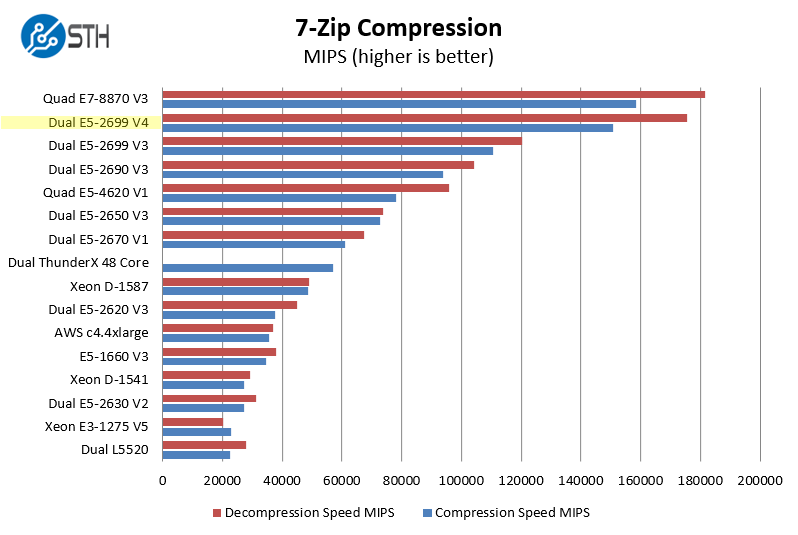
The versatility of Intel Xeon E5 v4 CPUs makes them suitable for a wide range of applications:
- Data Centers: E5 v4 processors are deployed in data centers to support virtualization, cloud computing, and big data analytics. Their high core counts and large cache sizes enable efficient handling of multiple virtual machines and complex workloads.
- Enterprise Servers: In enterprise environments, E5 v4 CPUs power mission-critical applications, databases, and enterprise resource planning (ERP) systems. The processors’ reliability and performance scalability ensure uninterrupted business operations.
- High-Performance Computing (HPC): E5 v4 CPUs are integral to HPC clusters and supercomputers, where their computational power and memory bandwidth support scientific simulations, genetic sequencing, and other compute-intensive tasks.
- Virtualization: Virtualized environments benefit from E5 v4 CPUs’ ability to efficiently allocate resources among virtual machines, optimizing performance and reducing operational costs.
Performance and Efficiency:
Intel Xeon E5 v4 processors excel in both performance and energy efficiency. The combination of high core counts, Turbo Boost Technology, and advanced power management features allows these CPUs to deliver exceptional performance per watt. This efficiency is crucial for reducing operational costs in data centers and maximizing ROI for enterprise deployments.
FAQ’s:
1. What is the Intel Xeon E5 v4 series?
It’s Intel’s fourth-generation Xeon E5 family of processors, designed for dual-socket servers, offering high performance and efficiency.
2. What are the key features of E5 v4 CPUs?
They include up to 22 cores, support for DDR4 memory, advanced security features, and Turbo Boost Technology for enhanced performance.
3. What are the main applications of E5 v4 CPUs?
They are used in data centers for virtualization and cloud computing, in enterprise servers for critical applications, and in HPC for scientific simulations.
4. How efficient are E5 v4 CPUs?
They are highly efficient due to their 14nm architecture, which reduces power consumption, and advanced power management features like Enhanced SpeedStep Technology.
5. Why choose Intel Xeon E5 v4 CPUs?
They offer scalability, reliability, and strong performance-per-watt metrics, making them ideal for demanding computing environments where efficiency and performance are paramount.
Conclusion:
The Intel Xeon E5 v4 series remains a cornerstone in Intel’s lineup of server-grade processors, offering unparalleled performance, scalability, and reliability for diverse computing environments. Whether deployed in data centers, enterprise servers, or HPC clusters, E5 v4 CPUs continue to meet the demanding requirements of modern computing workloads.
